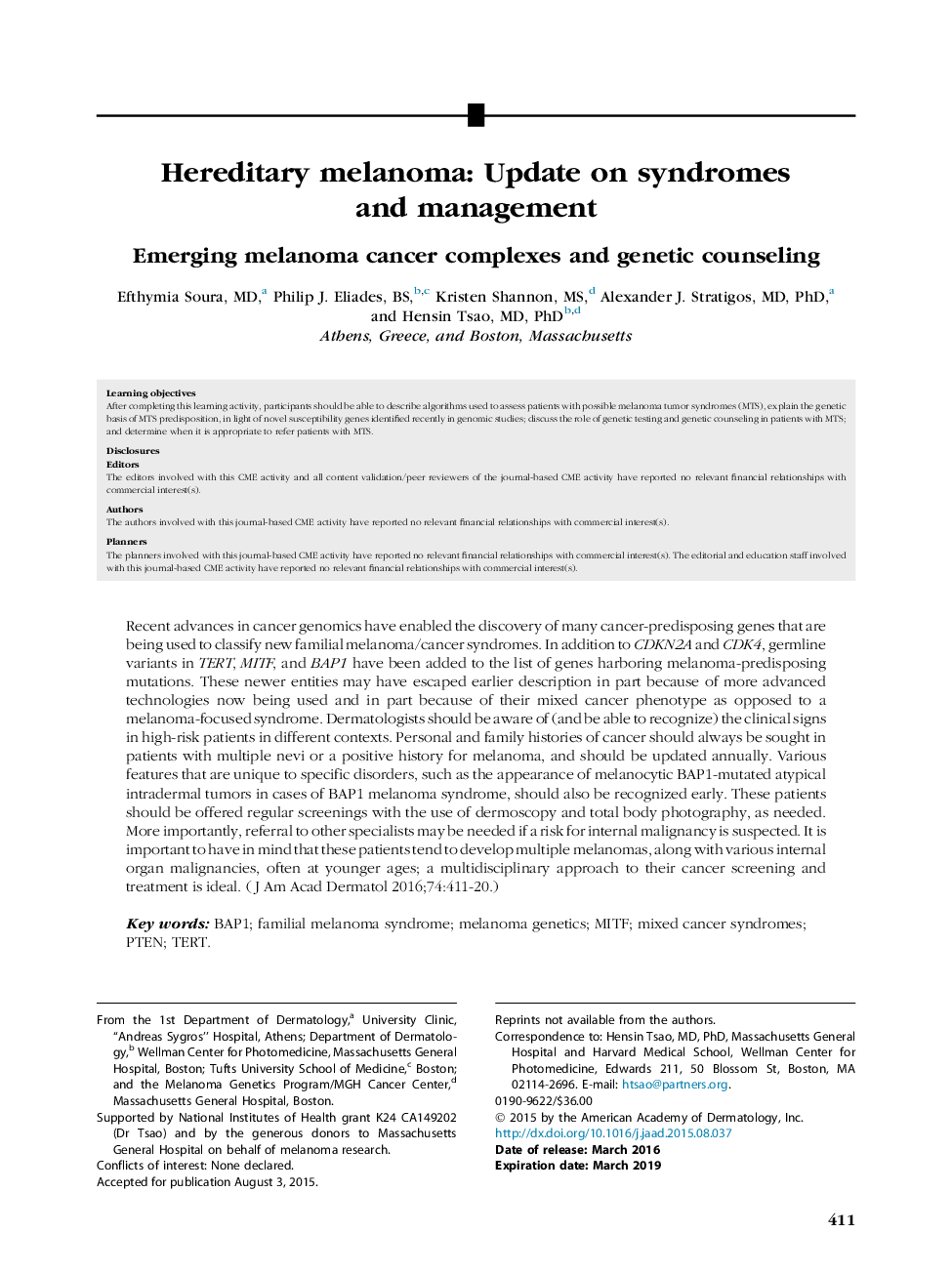| Article ID | Journal | Published Year | Pages | File Type |
|---|---|---|---|---|
| 6069893 | Journal of the American Academy of Dermatology | 2016 | 10 Pages |
Recent advances in cancer genomics have enabled the discovery of many cancer-predisposing genes that are being used to classify new familial melanoma/cancer syndromes. In addition to CDKN2A and CDK4, germline variants in TERT, MITF, and BAP1 have been added to the list of genes harboring melanoma-predisposing mutations. These newer entities may have escaped earlier description in part because of more advanced technologies now being used and in part because of their mixed cancer phenotype as opposed to a melanoma-focused syndrome. Dermatologists should be aware of (and be able to recognize) the clinical signs in high-risk patients in different contexts. Personal and family histories of cancer should always be sought in patients with multiple nevi or a positive history for melanoma, and should be updated annually. Various features that are unique to specific disorders, such as the appearance of melanocytic BAP1-mutated atypical intradermal tumors in cases of BAP1 melanoma syndrome, should also be recognized early. These patients should be offered regular screenings with the use of dermoscopy and total body photography, as needed. More importantly, referral to other specialists may be needed if a risk for internal malignancy is suspected. It is important to have in mind that these patients tend to develop multiple melanomas, along with various internal organ malignancies, often at younger ages; a multidisciplinary approach to their cancer screening and treatment is ideal.
